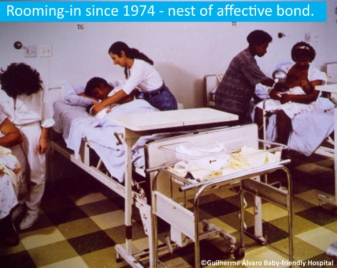Public Health Policies and Breastfeeding: outcomes related to the Baby-Friendly Hospital Initiative in Brazil
Abstract
Objective: This study aims to describe the outcomes of public policies in favor of breastfeeding related to the Baby-Friendly Hospital Initiative from 1992 to 2020 in Brazil.
Methods: This is a descriptive study with information and data gathered from August 2020 to August 2021 through searching in Portuguese and English, in Brazilian Federal Government and other sources for the period of 1990 to 2021. Descriptors used included baby-friendly hospital, baby-friendly hospital initiative, baby-friendly and breastfeeding.
Results: When the Baby-Friendly Hospital Initiative (BFHI) was launched in Brazil, it found a favorable context for its expansion with its own characteristics in the country, embraced by several Brazilian programs, strategies, actions, laws, decree law and ordinances in favor of breastfeeding. Despite not only being under the program domain, but also under political and coordination domains, the BFHI advanced 1992 to 2006, with deceleration from 2007 to 2015 and a decline from 2019. Such progress and slowdowns have been driven by policies and programs in the field of maternal and neonatal health. Since 2004 there has been a stagnation in the number of designated hospitals and 25 lost their certification from 2017 to 2020. The reasons for this include hospitals having no interest in maintaining the baby-friendly status, hospitals which no longer have maternity wards, and hospitals lacking triennial external re-assessment for over six years. In 2004 there were 301 Baby-Friendly Hospitals (BFH), and currently in 2021 there are 302, constituting less than 10 per cent coverage of the number of hospitals with maternity wards in the country. Even with the stagnation in the number of BFH, the BFHI continues to cover 100 per cent of Brazilian states with at least one BFH per state. Nevertheless, considering that all births in Brazil take place in hospitals, this makes the BFHI a strategy of great impact on breastfeeding rates. In addition, with four decades of policies, programs, and law on women’s and children’s health, Brazil is still a reference model and considered one of the countries with the highest prevalence of breastfeeding in the world, with exclusive breastfeeding at 45.7 per cent in 2019.
Conclusions: In the last 17 years, Brazil has not advanced in the number of hospitals designated by BFHI. Although studies showed that BFHs have higher breastfeeding rates in relation to hospitals not designated by BFHI, we need further studies to better understand how to strengthen the program. In any case, perhaps due to four decades of numerous programs protect, support, or promote breastfeeding in some way, even hospitals not designated by the BFHI appear to be having a positive impact on breastfeeding. It is necessary to understand and learn from the progress and setbacks, as the BFHI is a high-impact tool for infant nutrition, as well as an effective, efficient, and sustainable component as part of public policies in favor of breastfeeding. The revision of the BFHI led by WHO in 2018, not yet adopted in Brazil, can help in revitalizing and strengthening the BFHI in the coming years.

Authors retain all copyrights. In making a submission to World Nutrition, they are certifying that all material is theirs except quotations, as indicated, and that they have obtained permission for any photos, tables, or graphics taken from other publications or websites.




